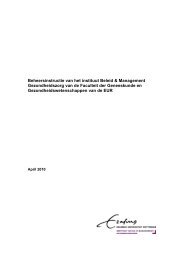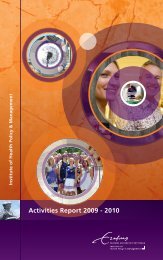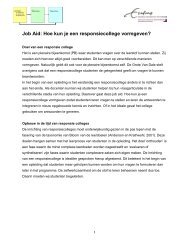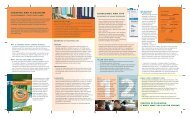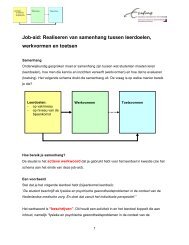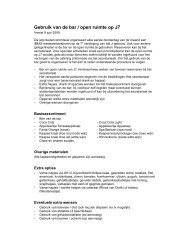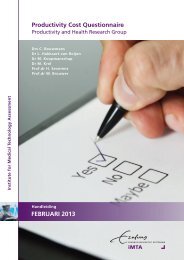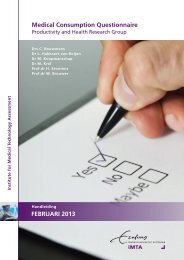Marten J. Poley - Erasmus Universiteit Rotterdam
Marten J. Poley - Erasmus Universiteit Rotterdam
Marten J. Poley - Erasmus Universiteit Rotterdam
- No tags were found...
You also want an ePaper? Increase the reach of your titles
YUMPU automatically turns print PDFs into web optimized ePapers that Google loves.
114Chapter 7More from a policy perspective rather than the perspective of individual medicaldecision making, there are still other factors in determining how much priorityneonatal surgery should be accorded in comparison and competition with otherareas of health care. However important economic evaluations are, they are onlyone source of information among several used to assist in decision makingprocesses. It essentially comes down to the question of how cost-effectivenessinteracts with other factors relevant at the social choice level. Arguments ofequity, justice, or fairness (hereinafter all loosely referred to as equity) areprobably the most influential of these other factors. Equity arguments haveoccasionally emerged in neonatal and pediatric cost-effectiveness studies. Forexample, Petrou and Edwards in their study into the cost-effectiveness ofneonatal ECMO reflected that "it is conceivable that decision makers place agreater value on health gains experienced by the young than those experiencedby other groups of the population". 40 Others also refer to equity arguments, butin a somewhat more general sense. Lantos, for example, states that neonatalintensive care units (NICUs) implicitly make a compelling moral claim uponsociety. This claim insists that we not turn our back on these tiny, vulnerablebabies. NICUs stand for our society's moral commitment to children. 41 Indeed,children, as 'sympathy-arousing victims of disease', greatly appeal to a widepublic, and many people would therefore tend to give them high priority inassigning limited resources. 'Blind instincts of nature' may contribute to ourpreference for youth over age in distributing access to social goods and services,as Loewy observed with a critical eye. 42Equity approachesThe previous section leaves unanswered the question of how to integrate costeffectivenessand equity arguments in a theoretically sound manner. In recenttimes, researchers have increasingly struggled with this problem of the so-called'equity-efficiency trade-off', 43-47 trying to find ways to capture both efficiencyconsiderations (maximization of the community's health) and equityconsiderations (e.g., reducing inequalities in health). We will now describe variousequity approaches put forward, and give insight into their relevance to neonatalsurgery.The so-called fair innings principle reflects the feeling that everyone is entitled tosome 'normal' span of health. Anyone failing to achieve this has in some sensebeen cheated, while anyone getting more than this is 'living on borrowed time'.Various survey reports suggest that there is indeed support amongst thepopulation for the idea of discriminating in favor of the young when confrontedwith unavoidable choices. 48,49 The fair innings principle is thus concerned with thelikelihood that people over their lifetime will achieve a certain target number ofQALYs. This approach must be distinguished from—though it may be combinedwith—evidence suggesting that society attaches different weights to a year ofperfect life lived by people of different ages (an effect of age per se). 50-56Generally, priority is given to the young over the elderly, even by the elderly







